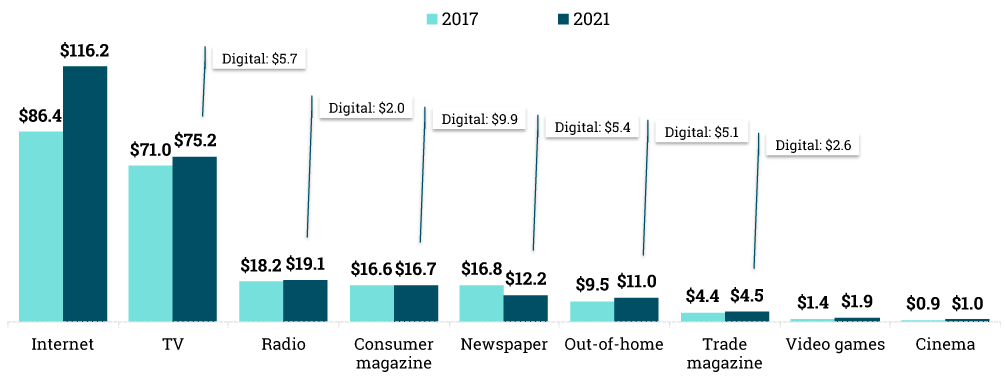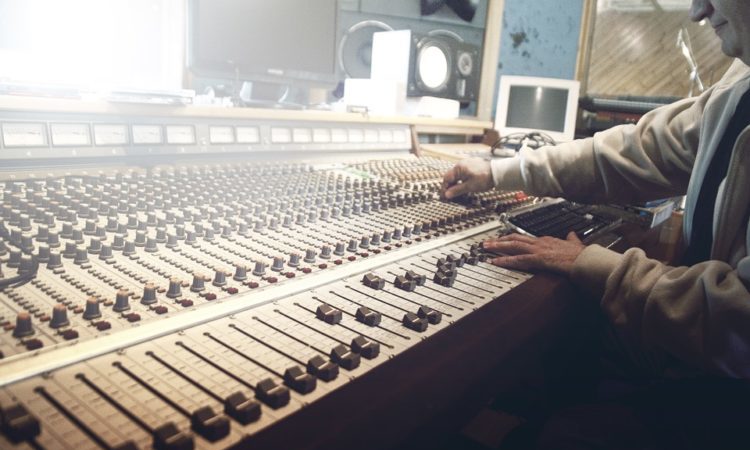Radio advertising has not been at the forefront of advertising choices for some companies, but that doesn’t mean it isn’t a viable option for getting new customers.
With the advent of radio advertising attribution, the performance of radio can be tied back digital conversions giving advertisers what they need to make effective campaign decisions.
LeadsRx can tie radio together with all your existing campaigns to truly target your audience where they are right now.
For more than a decade, the trend has been for small and mid-sized companies to focus on growing their digital footprint – often at the expense of broadcast media. Throughout this time, digital channels have been viewed as the cost-effective way to reach new customers mainly because the performance of ad campaigns could be directly tracked. But with new insights from attribution tools, this trend could change.
As little as only five years ago, the lack of familiarity and available tools to navigate the many different digital channels kept competition, and therefore advertising prices, low. However, the exodus of brands leaving broadcast in favor of digital channels has increasingly made those channels more competitive and costly over time.
This growth in competition is spearheaded by natural industry trends and the wide availability of tools to help companies self-serve and maximize opportunities.
Naturally, this has led to less competition on traditional channels like radio. As more companies overlooked the traditional broadcast mediums, smart companies that were taking a truly omni-channel approach capitalized. Decreasing competition in radio placements simply meant that advertisers were able to get more customers for the same advertising dollar.
Among all the traditional “broadcast” channels, radio is often able to deliver results far above most people’s expectations. Radio has a vast reach, with more than 36 million listeners every single week which collectively deliver $12 in sales for every $1 spent on advertising. That’s a return that the best campaigns on any channel would be hard-pressed to match.
Among offline advertising channels, radio has one of the lowest costs to reach 1,000 people:
Source: TheBrandOwner
Radio is a channel with broad appeal because it allows advertisers to reach listeners across demographics and in very specific locations. On radio, the audience is attentive as most listening occurs during commutes. As of 2016, 90% of commuters listened to the radio at least occasionally.
These reasons should be enough to pique the interest of any marketing director, but the benefits of radio advertising aren’t limited to those reasons. In this article, we’ll lay out some of the reasons why almost any company might be able to benefit from adding radio to their omnichannel advertising operation.
Radio Advertising is Cost Effective
While the inexperienced might assume that radio advertising is quite expensive, the truth is that radio advertising is perhaps the most cost effective traditional advertising channel available today.
Creating a 60-second TV ad would require an investment in a full cast and crew, voice actors, microphones, actors, sound designers, and more. That’s before you factor in the costs associated with actually running the ad. Creating radio ads is a much simpler (and cheaper) process.
What do you need to create an effective radio ad? In most cases, not much more than an effective script and a voiceover actor that has experience in radio. Good scripts and voice actors don’t come cheap, but the costs pale in comparison. Furthermore, the ad only has to be recorded one time and then it can be used in multiple markets to grow with your radio advertising budget.
A recent study from Re-evaluating Media showed that radio advertising is near the lowest production cost, a fact that many advertising agencies recognized:
The low production costs of radio advertising have led to somewhat of a renaissance within the industry. As more companies look to diversify their advertising operations, radio makes for an enticing option.
While newspaper advertising dollars shrink, radio is expected to see significant growth through 2021:

Source: Inside Radio
Radio, despite being a longstanding offline marketing channel, appears poised for significant growth in the coming years, due mostly to its reliability.
Attribution Shows How Radio Advertising and Digital Work Together
What brought radio back into the digital realm is Radio Advertising Attribution. The biggest problem with broadcast advertising has been not being able to measure its direct response (or immediate) effect. With attribution, you can now measure digital actions (website visits, conversions, phone calls) caused by offline marketing like radio.
Embracing radio as part of your omni-channel approach doesn’t mean that you are moving away from other channels. In fact, radio fits cohesively with other channels. It’s particularly effective for campaigns that target specific localities.
In fact, to maximize radio campaigns it is incredibly important that you maintain an effective digital presence. If a prospect hears your ad and then turns to Google to learn more about your business — it’s important that they are able to find you. Linking all of these interactions together into one conversion path is the foundation of marketing attribution – because it answers the question “what interactions lead to this conversion?”
Radio listeners may look you up on social media so maintaining an active presence on social networks not only helps to make sure that your brand is present when they are searching. This also gives brands a chance to make a good first impression on those that first became aware of an offer through a radio ad.
This complicated marketing landscape is why we started LeadsRx. Using our attribution software, we help companies identify visitors that come to their web properties from radio advertisements – and track those all the way back to the conversions they generate.
Having a complete picture of how your digital and offline channels work together to create a cohesive journey for your customers is critical for the optimization of adverting. Marketing attribution allows you to proportionately attribute conversions to the interactions which generated them.
Radio Targets Your Market at the Ideal Time
The effectiveness of any advertising campaign comes down to targeting. Getting the right message in front of the right people at the right time. Being able to get your message in front of your audience at a time when they are likely to make a purchase is critical.
With local targeting options and the detailed demographics that radio advertising programs now provide, it’s now easier than ever before to make sure that your radio ads are getting in front of your target audience.
However, radio targeting goes much deeper than simple demographics. Where radio really starts to become effective for companies is when they couple demographic targeting, interest targeting, and time targeting. This ensures that they are not only getting in front of the right audience but getting in front of them when they are actively looking to buy.
Radio ads allow you to target specific “touchpoints.” A touchpoint as it applies to radio advertising is a specific time of the day when people are likely to be in their cars. Some common touchpoints include:
- Morning commute to work.
- Evening commute after work.
- Early morning school runs.
- Morning and evening workouts.
- Dinner time.
These are common times when people are in their cars, which is when they are most likely to interact with radio advertisements. Then, you can work with the data provided by the radio station to laser-target your messaging to specific demographics during those touchpoint times, when they are most likely to be engaged.
Radio Builds Awareness
Generally, radio is an excellent channel for all points throughout the customer experience, but it does lend itself particularly well to top-of-funnel communications and awareness-building campaigns. Radio accounts for 14% of all time spent consuming media. Radio has been shown to provide significant growth to brand fame levels and brands that advertise on radio stations enjoy higher levels of awareness and brand consideration.
Audio Listeners Continue to Grow
According to IPA Databank, audio (including live radio, internet radio, and podcasts) account for 18% of total media consumption. 96% of adults listen to some form of audio content for an average of more than 20+ hours per week.
The medium isn’t going anywhere, anytime soon. While live radio may start to see a smaller chunk of the pie as more listeners turn to podcasts, satellite radio, and other services — that doesn’t mean that results with radio advertising will be negatively impacted. In fact, advertising in radio would serve any business well if they are properly measuring its impact on conversions.
Radio Ad Avoidance is Low
Advances in technology have changed the way that people interact with media. Ad avoidance now plays a bigger role in advertising decision-making than it did just ten years ago. Ad avoidance is particularly problematic in the digital space where consumers can easily adjust their attention to other areas or use ad blockers to avoid advertisements.
Customers are more likely to engage with different types of media simultaneously and they may be performing other activities simultaneously. According to a recent study from NPR, multitasking among their audience was the highest while watching television. Often, their listeners would be engaging with their brand materials or even listening to their radio/podcasts while the TV was on in the background.
However, when attentiveness was compared while only watching TV or listening to radio, it was found that listeners were much more attentive while listening to radio. The listeners agreed too, with 74% saying that they felt like they were more attentive while listening to NPR than watching television.
Tried and True
Radio may be an older, more traditional channel than its comparable digital counterparts. But that hasn’t stopped it from continuing to chug along, producing impressive results for advertisers in the process. The truth is that as long as vehicles are still equipped with radio antennas, radio will stay a viable medium for reaching consumers during long commutes.
Now with the advent of radio advertising attribution, the performance of radio can be tied back digital conversions giving advertisers what they need to make effective campaign decisions. Before you ignore the radio channel, make sure you give it a chance to compete against your Facebook, Instagram and Google Search ads – you might be surprised at the results.

